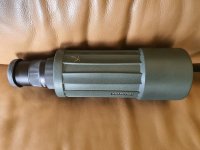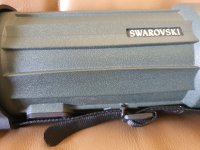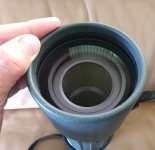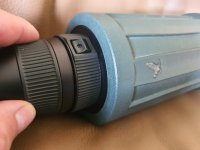Hermann
Well-known member

Some posts in the recent thread on the armour used by Swarovski in their roofs argued more manufacturers might contemplate making binoculars without any armour. One of the ideas put forward was to increase the stability of the body by increasing the wall thickness of the housing making any armour superfluous. (E.g. Problem with green coating of EL SV 8x32)
This got me thinking: What are the advantages (and functions) of armouring binoculars? And what are its disadvantages?
I came up with the following points in favour of armouring binoculars:
Disadvantages:
This got me thinking: What are the advantages (and functions) of armouring binoculars? And what are its disadvantages?
I came up with the following points in favour of armouring binoculars:
- Mechanical protection: Armour protects the binoculars from knocks and abrasion if they come into contact with some hard surface, e.g. rocks in the mountains. This is perhaps the most obvious function of armour, and armour does protect binoculars pretty well as long as it is well-made.
- Protection in cold climates: Armour also protects your hands in cold climates. Bare metal (or metal covered with thin leatherette) is a very efficient heat sink, even if you wear gloves.
- Noise reduction: An armoured binocular is "quieter", for instance when it moves on the chest against the zipper or buttons of a jacket or the straps of a backpack.
- Well-made armour makes it easier to hold the binoculars securely when they're wet, e.g. in the rain or on a boat. That's the reason why e.g. the "classic" Zeiss Dialyts, the rubber-armoured green Habicht 7x42 and 10x42 and the military Hensoldt models have heavily ribbed rubber armour.
Disadvantages:
- Weight: Armour may increase the weight of binoculars quite significantly. In the case of the Habicht 7x42 the armour weighs ~70gr. That's quite a lot. (Maybe the additional weight is the reason why most modern armours are so thin.)
- Aesthetics: Some people prefer the "classic" look of an unarmoured binocular like e.g. the Habicht 7x42 with leatherette covering, or indeed the Leica Retrovids. Such binoculars look "nice".
- Repairs: An armoured binocular is arguably more difficult to repair than an unarmoured one because any repairs involve two additional steps (getting the armour off and putting (new) armour on the binocular). If the armour is really tough (think the Leica BA/BN series with their polyurethane (?) armour) this may increase the cost of any repairs.
- I personally like both, armoured and unarmoured, "classic" binoculars. Let's face it, the Habicht 7x42 (leatherette finish) looks nicer than the green, rubber-armoured version. However, on birding trips I'd always take armoured binoculars if I have a choice.
- I'd personally like all manufacturers to use some thicker, tougher armour, even if that increases the weight a bit. Many manufacturers only seem to go through the motions when it comes to armouring their binoculars. I've handled binoculars where you could literally tear off the armour with your fingernails.
- I know this is the binocular forum, however, I think the same applies to scopes. Scopes often get knocked around in the field quite a bit, and buying a protective stay-on case for your scope shouldn't really be necessary. The only scope with some tough armour I can think of is the Zeiss Dialyt 18-45x65, a scope aimed at the hunting market and for a variety of reasons not that attractive for birders.











